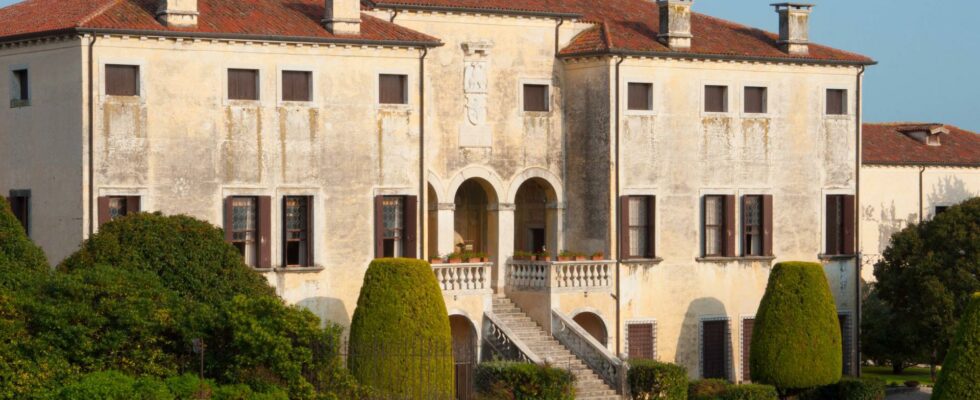The end of our trip had started badly. Arrived at the address of the villa Godi Malinverni, in Lugo di Vicenza, north of Vicenza, it is another noble house – the villa Piovene – which first jumps out at us. Have we got lost? Since our departure from Venice a few days earlier, we had been discovering Venetia in search of masterpieces by the greatest architect of the Renaissance, Andrea Palladio (1508-1580).
Author of Four Books of Architecture (I Quattro Book of the Architettura), inspiration of Palladianism – this architectural style dear to the English and then to the Americans in the 18the century –, Palladio is without doubt the only architect in the world whose almost all of his still existing works are classified as World Heritage by Unesco. After Venice, the Brenta Canal and the city of Vicenza, we ended our journey with a moment of confusion quickly dissipated.
Because the Godi Malinverni villa – Godi like its sponsors in 1537, Malinverni like its current owners – is indeed there, hidden by a discreet gate. We passed without seeing her. Villa Piovene, which misled us, is not ” that » another family’s competing project. Attributed without certainty to Palladio, of less interest than its neighbour, its presence alone sums up the architectural abundance of this region. North of Venice, on the mainland, the villas – of Palladio and his successors – are more numerous than the castles along the Loire!
Christian Malinverni receives us in an annex of the Godi villa, which entered his family in 1961. “Go see the house, we’ll talk about it later”, he tells us, pointing to a door that leads to the garden. The last rays of the sun have dissipated the mist, and the facade of “the first villa of the Palladio” finally offers us its austere purity. In the middle of two massive avant-corps devoid of ornament, a very light staircase leads to the triple arcade of the noble piano (the noble floor), set back.
With the two side arches that give access to the ground floor, this entrance is Palladio’s signature. At the top of the steps, the loggia opens onto a large living room and adjoining frescoed rooms. Here a gentleman emerges from behind a trompe-l’oeil curtain, there a child dreams at the window: what life on these walls! Moviegoer reminiscences spring up: Alida Valli and Farley Granger have love scenes behind those high doors in Sensoby Luchino Visconti, filmed here in 1953.
You have 64.78% of this article left to read. The following is for subscribers only.
